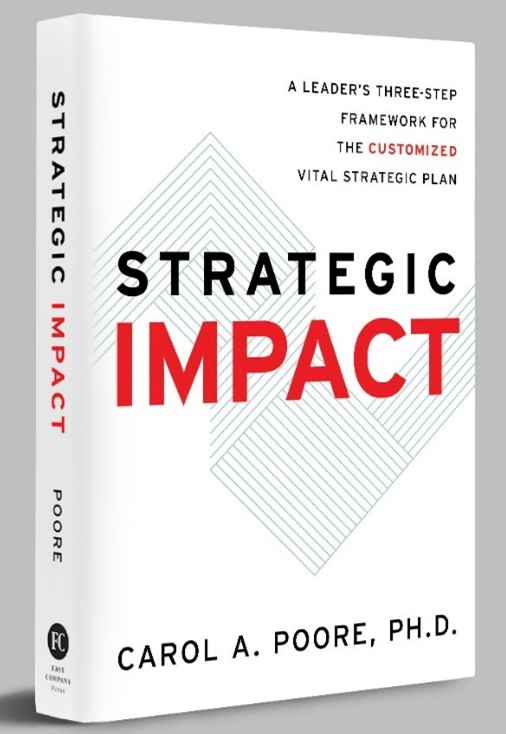Strategic plans include vision statements, mission statements, and values statements. These carefully chosen words provide strategic imperatives for any organization, no matter the type and the size.
What are the differences between these statements?
Vision Statement
Your company’ vision statement describes the aspirational future or horizon where the organization is headed.
In recent years, some organizations have combined an overarching “grand purpose statement” with vision statements, or created a separate and supplemental grand-of-all-grand statements to describe how the organization intends to profoundly impact the world.
For example, Apple’s vision is “We believe that we are on the face of the earth to make great products and that’s not changing” (Rowland, 2019.) This is a broad, aspirational statement of a futuristic and general nature and focused on world impact as well as aspirational future.
Mission Statement
Your organization’s Mission Statement presents what the organization does and in some cases, why and how the organization does it..
Apple’s mission is “to bringing the best user experience to its customers through its innovative hardware, software, and services” (Apple, 2018). In contrast to their vision statement, this description is more specific and focuses on the organization’s cause and what it provides or does.
Most mission statements fall between two and four sentences in length and are not more than one hundred words in all. Your organization’s mission statement should be just the right length to get their point across, and it should be designed to be an internal document that explains how the organization inspires your team to achieve the company goals.[i]
Short vision and mission statements are often the most powerful and memorable. These feature carefully chosen words that succinctly describe the organization’s aspirational purpose and body of work.
For example, TED has a poignant two-word mission statement: “spread ideas.”
Organizational Values Statement
An organization’s values are the beliefs, philosophies, and principles that drive your business. These impact the employee experience delivered as well as the relationship you develop with customers, partners, and shareholders. Company values are employee and customer-centric and help boost employee motivation, morale, and employee advocacy, as well as providing guidance for employee behavior in the workplace.[ii]
Many organizations share values in the strategic plan, on the organization’s website, and in the investor relations and other materials.
Apple’s values include “Accessibility, Education, Environment, Inclusion and Diversity, Privacy, and Supplier Responsibility.” Apple’s website includes a separate landing page for each value, where each value is explained with extensive detail.
Cars.com describes the company’s values on the “career” website page. This helps jobs applicants assess whether they can align with the state values. Values and descriptions (such as those of Cars.com—“Be Bold,” “Start With the Consumer,” and “Challenge and Collaborate”) can provide an inspirational opening chapter to preface your strategic plan.
For creating a vibrant strategic planning workshop experience, I advise leaders to conduct vision, mission and values discussions toward the end of the workshop – not at the beginning, This allows strategic planning activities to be focused on strategy and setting strategic goals rather than wordsmithing.
For more information about how to lead what I call a “Vision, Etc.” discussion, read my workshop chapter in Strategic Impact: A Leader’s Three-Step Framework for the Customized Vital Strategic Plan, published by Fast Company Press.
[i] Cherry (2019).
[ii] Heinila (2020).




